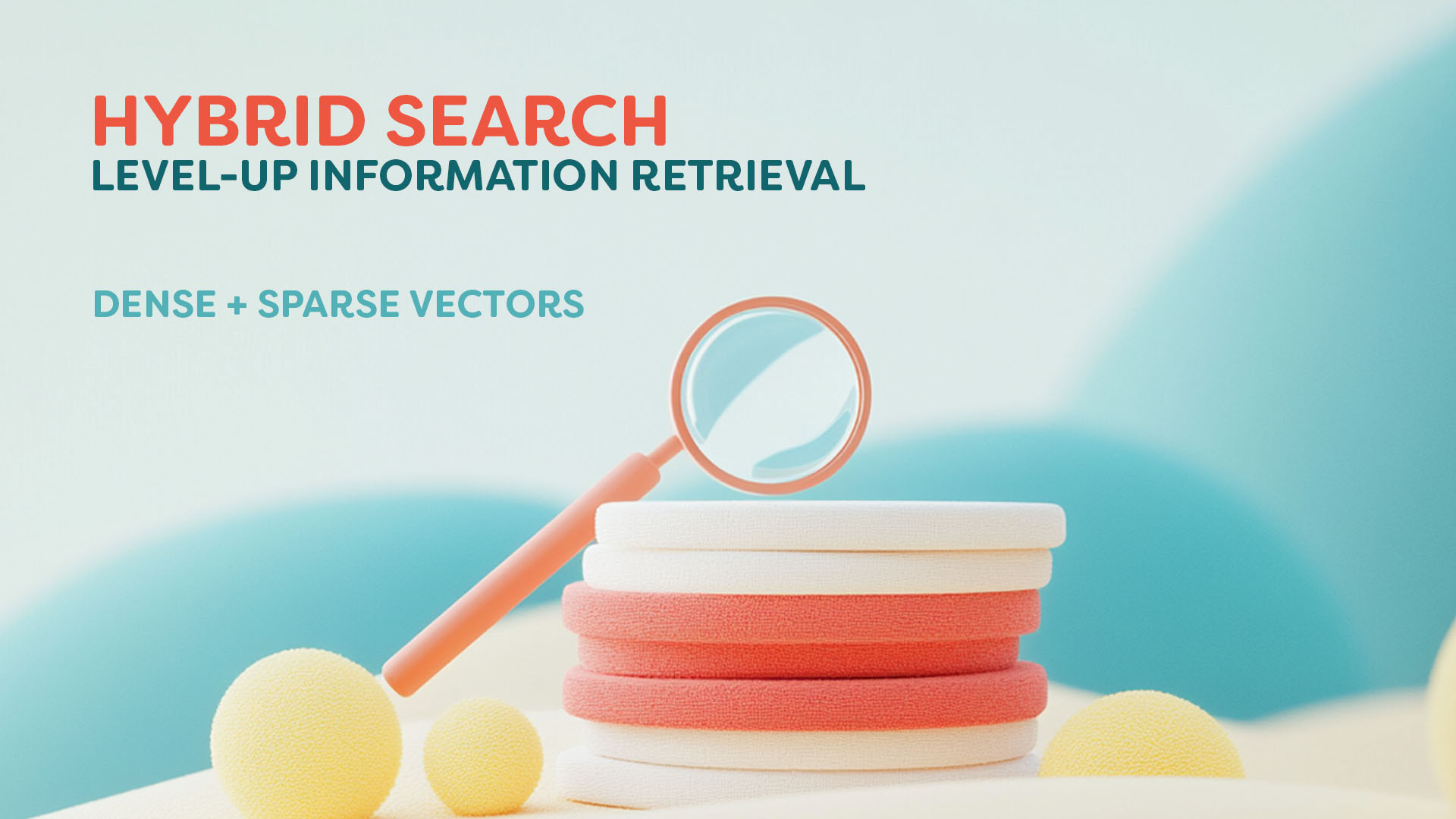
Hybrid Search: How Sparse and Dense Vectors Transform Search and Informational Retrieval
With the rise of RAG (Retrieval-Augmented Generation) applications, vectors and vector databases have taken center stage. Terms like vector embeddings are becoming common knowledge. But as I dug deeper into how I could improve information retrieval, I realized that the vectors I’d been generating using tools and models delivered by OpenAI or Ollama were actually dense vectors. This got me thinking—how do these dense vectors fit into a hybrid search world? And what are these sparse vectors I keep coming across.
Here’s a quick rundown on what sparse and dense vectors are, what they’re good at, and how they can be used in combination to improve search and information retrieval systems such as in RAG.
Sparse Vectors: Keyword Specialists
Sparse vectors are like the efficient keyword specialists of the vector world. They only focus on a few key pieces of information—most of the elements in a sparse vector are zero, with only a handful of non-zero values that really matter. These vectors are typically used to represent whether certain keywords are present in a document.
Imagine you’re working with a document on cloud security. In a sparse vector, the key terms like “cloud” or “security” would get a numeric value indicating their relevance, while the rest of the terms get left at zero. This makes sparse vectors highly efficient for both storage and computation—you’re only processing what matters.
For instance:
sparse = [{331: 0.5}, {14136: 0.7}]
Here, the numbers represent vocabulary indices, and the values indicate how important those terms are to the document. Sparse vectors shine when it comes to traditional text searches, where exact keyword matching is crucial.
Dense Vectors: Meaning Makers
On the other hand, dense vectors don’t waste any space. Every element in a dense vector carries some value—there are no zeros here. Instead of focusing on individual keywords, dense vectors capture the semantic meaning of words. They’re generated by models like BERT or Sentence Transformers, which help the system understand relationships between words in a much broader sense.
Let’s say you have a dense vector that looks like this:
dense = [0.2, 0.3, 0.5, 0.7, ...]
This vector represents a document’s or query’s meaning across hundreds or even thousands of dimensions. Dense vectors are great for semantic search, where you want to find documents based on the meaning behind a query, rather than exact word matches. For instance, if you search for “AI” and the document talks about “machine learning,” a dense vector can help make that connection based on their conceptual similarity.
Hybrid Search: Marrying Precision and Meaning
Now, let’s talk about hybrid search, which brings together the best of both sparse and dense vectors. Why does this matter? Because each vector type has its strengths and weaknesses:
Sparse vectors are excellent for keyword matching. They’ll help you find documents with the exact terms you’re searching for, which is critical in many scenarios.
Dense vectors, by contrast, are ideal for understanding context and meaning. They can retrieve documents that don’t contain the exact keywords but are still relevant based on the overall meaning.
Hybrid search takes advantage of both approaches. By combining the precision of sparse vectors with the deep contextual understanding of dense vectors, hybrid search ensures you’re not missing out on key documents, whether they match the exact query or just the underlying idea. This becomes especially powerful in applications like Pinecone, where hybrid search merges both vectors into a single querying method.
Summary
In short, if you’re trying to build more robust information retrieval systems, knowing how to leverage both sparse and dense vectors is essential. Together, they give you the power to match exact keywords while also capturing the nuanced relationships between concepts—giving users the most relevant and comprehensive results possible.
